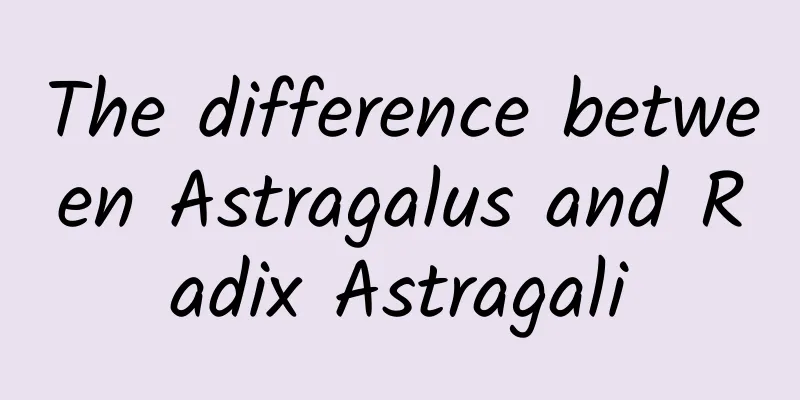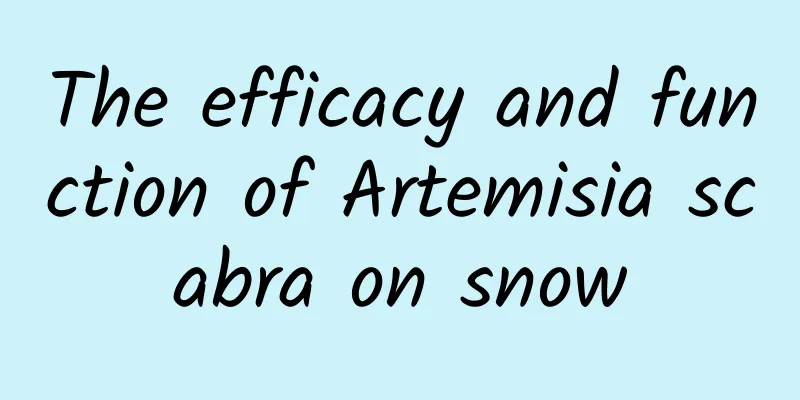The difference between Astragalus and Radix Astragali

|
Do you know about Beiqi and Huangqi? They are both very common Chinese medicinal materials. You should have heard of Huangqi. Its medicinal value is very great. The main production areas are Changbai Mountain in Jilin and Inner Mongolia. Huangqi can treat many diseases. Beiqi is the same. It is very good for our body. So do you know the difference between Beiqi and Huangqi? There are many traditional Chinese medicines that people know little about in normal times. Sometimes the names of some traditional Chinese medicines are very similar and easy to confuse. For example, Beiqi and Huangqi, everyone should not know such traditional Chinese medicines. Let’s take a look at the difference between Beiqi and Huangqi. Astragalus membranaceus Beiqi, also known as Astragalus membranaceus, is named Beiqi because it is produced in abundance in northern my country. It is mainly produced in Changbai Mountain in Jilin Province, Hengshan Mountain in Hunyuan County, Shanxi Province, and Inner Mongolia and other provinces and regions. Astragalus membranaceus is a perennial herb of the Leguminosae family with a deep, long, club-shaped taproot; an erect stem with many branches at the top; odd-pinnate compound leaves with ovate to lanceolate leaflets, and both stems and leaves covered with white pubescence; opposite racemes with small, light yellow, butterfly-shaped flowers; membranous pods, flowering from July to August, and fruiting from August to September. Astragalus membranaceus prefers a cool and dry climate, and prefers sandy soil with good drainage and deep soil layer. It mostly grows on sunny slopes or on the edge of bushes at an altitude of 800-1300 meters. The root of Astragalus membranaceus is a tonic medicine and was first recorded in "Shennong's Herbal Classic" and listed as a top-grade medicine. Li Shizhen called it "the best tonic medicine" in "Compendium of Materia Medica", which shows that Astragalus membranaceus has a long history as a tonic medicine. Medicinal properties of Astragalus Astragalus is cylindrical, rarely branched, thicker at the top, 10-90 cm long and 1-3.5 cm in diameter. The surface is grayish yellow or light brown, with irregular longitudinal wrinkles and transverse lenticels. It is hard and tough, not easy to break, with a strong fibrous and powdery cross section. The bark is yellowish-white, the wood is light yellow with a chrysanthemum heart, and has radial texture and cracks. It has a faint odor, slightly sweet taste, and a slight bean flavor when chewed. No matter which variety of Astragalus, the strips are thick but not hollow, the skin is fine and soft but not hard, the bark is white when cut, and the wood is bright yellow. The best ones have obvious chrysanthemum core in cross section without strong fibrousness or large cracks, and taste sweet with a beany flavor. Conceptual Difference Astragalus is the name of a traditional Chinese medicine, while northern astragalus or northern astragalus can only be said to be the name of a prescription. Because good quality Astragalus is mainly produced in Heilongjiang, Inner Mongolia, and Shanxi. Therefore, in order to emphasize the origin of Astragalus, doctors often use names such as Northern Astragalus (Astragalus produced in Inner Mongolia and Heilongjiang) or Western Astragalus (Astragalus produced in Hunyuan, Shanxi) in prescriptions. Because now Astragalus is mainly a cultivated product, and it is generally believed that the one produced in Shanxi is better than that produced in Inner Mongolia and Heilongjiang. Therefore, it can be understood that western astragalus is better than northern astragalus. Now everyone should know some of the differences between Beiqi and Huangqi. In fact, Beiqi is what we usually call Huangqi, but they have different prescription names. You may wish to learn about the medicinal value of Huangqi. It has many functions, and many nourishing soups with functions can be made with Huangqi and many other medicinal materials. |
<<: The benefits of wormwood foot bath
>>: The efficacy and function of Cassia seed
Recommend
How to distinguish the authenticity of Cordyceps sinensis
Cordyceps sinensis is a precious medicinal materi...
The efficacy and function of royal poinciana
Delonix regia is a common Chinese medicinal mater...
What to do when new energy vehicles encounter cold waves, rain and snow? You must read this for your family!
On January 23, the Central Meteorological Observa...
The largest range of rain and snow this year starts today! How to judge whether it is snowing or raining?
From January 20th to 24th, This year, the largest...
The efficacy and taboos of boiling mulberry leaves in water
Mulberry leaves are a natural plant that can not ...
New fabric allows secure payments and health monitoring with a swipe of the sleeve
With the rapid development of science and technol...
Why do people laugh so hard that they can't close their mouths? The secret that makes people drop their jaws...
"Hahaha, I can't stop, I can't stop ...
Robots and artificial intelligence combine to realize the robots of your imagination
The robots that people imagine are the kind that ...
Is it necessary to build giant starships so that humans can fly out of the solar system and into deep space?
Almost all science fiction movies and TV shows de...
The efficacy and function of fern
As a traditional Chinese medicine, the medicinal ...
Hu Q&A丨Why do nuclear submarines run so fast?
Where do nuclear submarines run faster? First, ru...
If noodles don’t get soft even after being cooked for a long time, is it because industrial glue has been added and they cannot be eaten?
gossip "Noodles that don't get soft afte...
I spent a lot of money to test 38 facial cleansers: For oily skin, dry skin, and sensitive skin, just read this article!
Everyone’s skin care steps vary greatly, but this...
The beauty of festivals丨Why is Qingming Festival always around April 5th?
Today, April 5th, is the Qingming solar term in t...
Black workers: 90s bees cloned into a million-strong army, almost subverting the South African beekeeping industry
More, more, more. Written by | Krestrel Honey bee...









